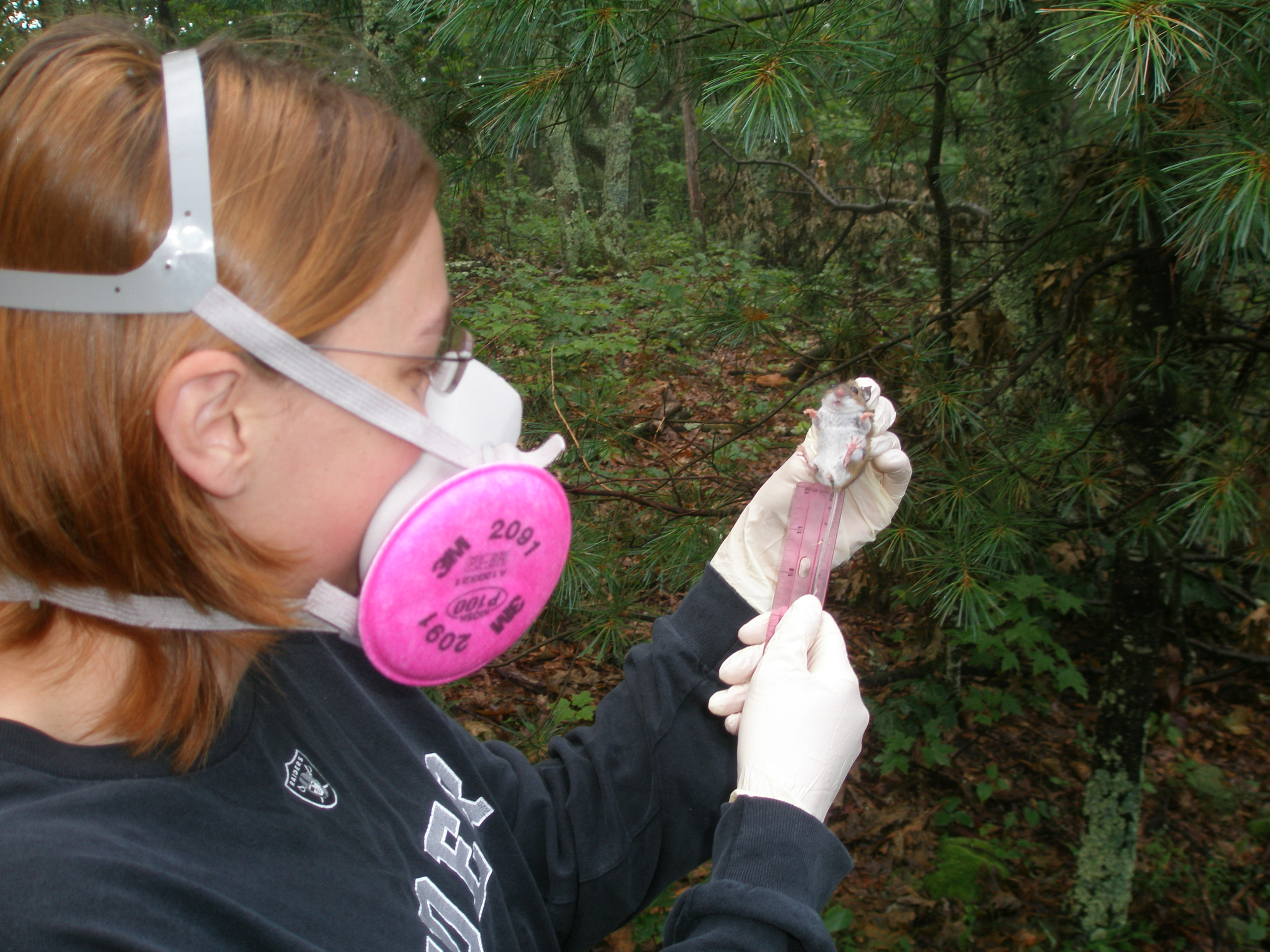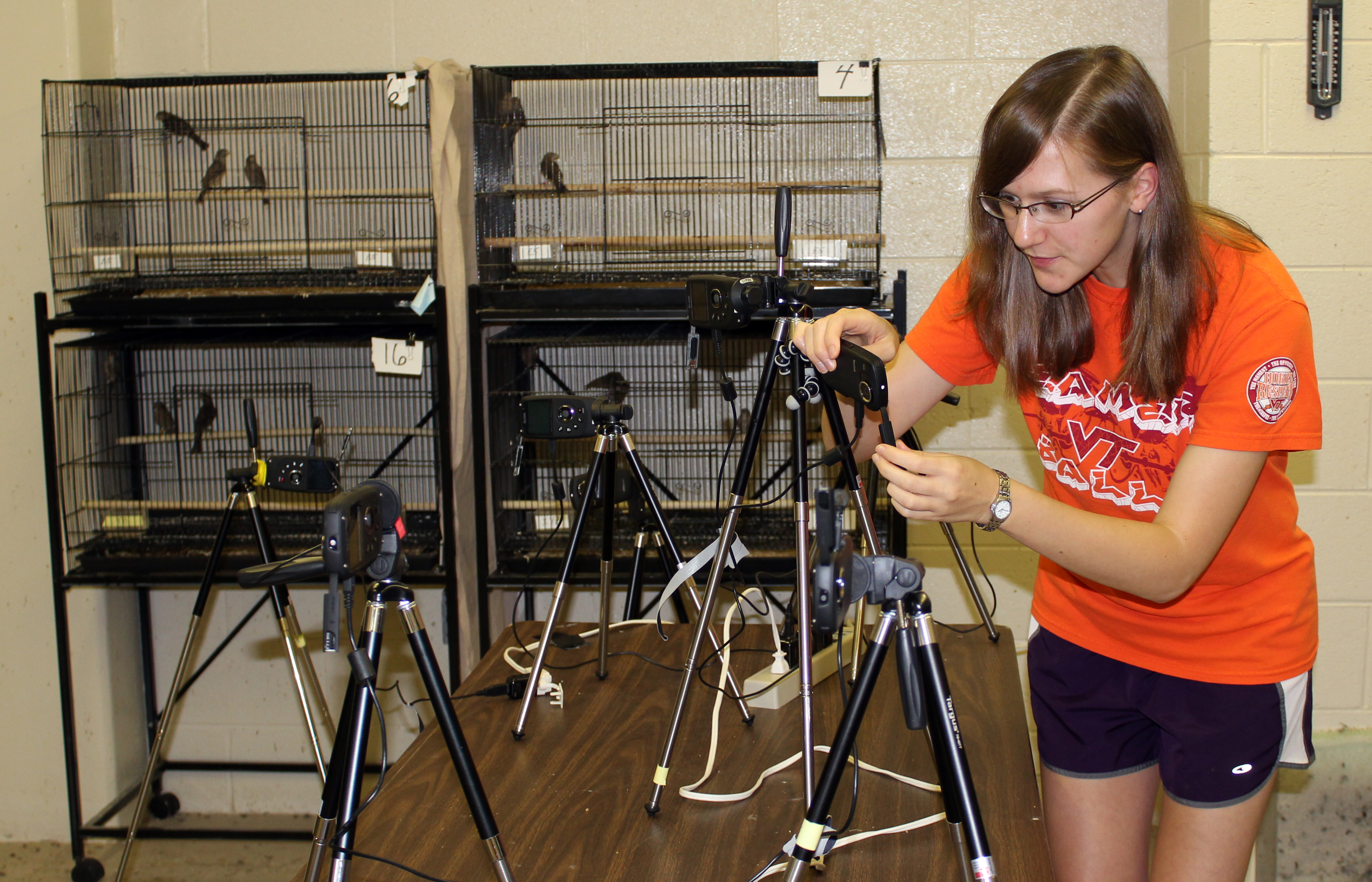Undergraduate students make their mark in fish and wildlife conservation research

Students from the College of Natural Resources and Environment will showcase their research projects at the Virginia Tech Summer Undergraduate Research Symposium, the largest university-wide event featuring summer undergraduate researchers.
The students, who are participating in the Summer Undergraduate Research Fellowship program hosted by the Fralin Life Science Institute, will join with those from a number of summer research programs to share the results of their diverse projects at the symposium, to be hosted by the Office of Undergraduate Research at the Inn at Virginia Tech on Aug. 3.
Katy Battle of Richmond, Va., a junior majoring in wildlife science, is conducting antibiotic testing for a limited number of E. coli isolates from wildlife fecal samples to evaluate levels of antibiotic resistance among wildlife species found along the Chobe River in northern Botswana. Her work on campus supports the research of Associate Professor Kathleen Alexander of the Department of Fish and Wildlife Conservation, who studies human and ecological drivers that influence water quality and the health of human and animal populations.
“My work will help researchers identify those wildlife more likely to harbor antibiotic resistance so that management strategies aimed to reduce both environmental accumulation of resistance and its transmission may be enacted,” Battle said.
John Woodward of Richmond, Va., a senior fisheries science major, examines how elevation affects the growth rates of brook trout and blacknose dace with Assistant Professor Andrew Rypel in the Department of Fish and Wildlife Conservation.
“The hypothesis is that specimens from higher elevations will naturally experience lower temperatures throughout the year and thus higher growth rates are expected as an evolutionary adaptation to high over-winter mortality of slower growing individuals,” Woodward said.
Roxzanna Dalton of Barren Springs, Va., a senior majoring in wildlife science, studies prey selection strategies of coyotes in Bath and Rockingham counties with Associate Professor Jim Parkhurst of the Department of Fish and Wildlife Conservation as part of the inter-agency Virginia Appalachian Coyote study.
“By better understanding the way coyotes select their prey, we may be able to manage coyote populations more effectively,” Dalton said.
Senior wildlife science major Jacob Estienne of Suffolk, Va., is working with Associate Professor Marcella Kelly in the Department of Fish and Wildlife Conservation to develop a snare to collect hair samples from coyotes. He sets up baited snares to attract the predators and uses cameras to observe how they interact with the equipment.
“We will be able to take the combined information from the hair samples and the camera photos and see how effective these snares would be at successfully gathering genetic material from this elusive species,” Estienne said.
Kelly also mentors Trevor White of Richmond, Va., a senior business information technology major in the Pamplin College of Business, who is analyzing camera trapping data from the Mountain Lake Biological Station. White, part of the Division of Undergraduate Education’s Scieneering program, will use this data and further field research in the area to test new game cameras for use in Kelly’s coyote studies.
Senior wildlife science major Kara Kosarski of Cloverdale, Va., works with Dana Hawley, an assistant professor in the College of Science’s Department of Biological Sciences, to study the connection between social behavior and disease in eastern house finches.
“My work is primarily focused on dominance, an important aspect of social behavior, and the role it plays in the way house finches display sickness behaviors,” Kosarski said.
Three wildlife science majors — seniors Jeronimo Silva of Sao Paulo, Brazil, and Tyler Williams of Wirtz, Va., and junior Alex Garretson of Rockville, Md. — are working as research assistants under the direction of Professor Carola Haas and Research Scientist Thomas Gorman in the Department of Fish and Wildlife Conservation.
Silva is evaluating the population trends of Florida bog frogs, a species that is believed to exist only in western Florida. Williams is assisting Haas by testing the addition of mineral oil to the fluorescent powder used to track reticulated flatwood salamanders, which are federally endangered in part due to a decline in the habitat where they lay their eggs. Garretson studies one of North America’s few captive populations of loggerhead shrike, a bird that feasts on large insects and lizards, while he was stationed at the Smithsonian Conservation Biology Institute in Front Royal, Va.
The Fralin Life Science Institute Summer Undergraduate Research Fellowship program and the Division of Undergraduate Education’s Scieneering program worked together to offer a total of 82 students — including those highlighted here — paid research fellowships in the summer of 2012. These programs are designed to increase research opportunities for undergraduate students, which in the past were not as readily available.
Written by Alex Koma of Vienna, Va., a junior majoring in communication in the College of Liberal Arts and Human Sciences.





